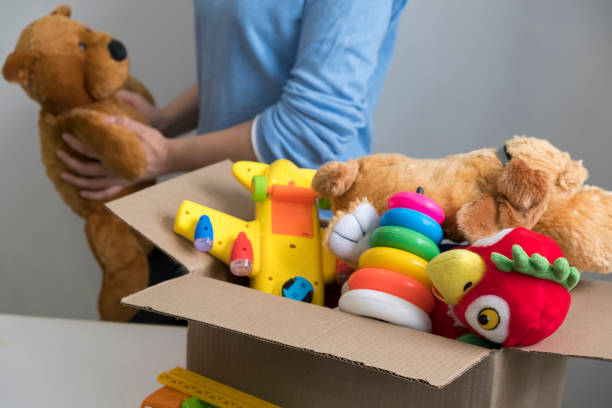Donate Used Furniture: A Guide to Giving Back
Introduction
Donating used furniture is a generous and impactful way to give back to your community. It not only helps those in need but also promotes sustainability by reducing waste and the demand for new resources. This guide will explore the numerous benefits of donating used furniture, how to prepare items for donation, and where to donate to make the most significant impact.
The Benefits of Donating Used Furniture
When you donate used furniture, you create a ripple effect of positive outcomes. First and foremost, your donation can provide essential items to individuals and families who might be struggling to afford new furniture. This can be especially beneficial for those transitioning out of homelessness, survivors of domestic violence, and refugees starting a new life.
Additionally, donating used furniture supports environmental sustainability. Furniture manufacturing is resource-intensive, involving significant amounts of wood, metal, plastic, and energy. By donating your used furniture, you help reduce the demand for new products, thus conserving natural resources and decreasing greenhouse gas emissions associated with manufacturing and transportation.
Moreover, many organizations that accept furniture donations use the proceeds to fund their charitable programs. Thrift stores operated by non-profits often sell donated items to raise money for community services, such as food banks, shelters, and job training programs. Thus, your old furniture can contribute to a wide range of charitable initiatives.
Preparing Furniture for Donation
Before donating your furniture, it's essential to ensure it is in good condition. Charities and organizations typically accept items that are gently used and functional. Here are some steps to prepare your furniture for donation:
- Clean the furniture thoroughly. Remove any dirt, stains, or odors to make the items more appealing to recipients or buyers.
- Check for damages. Ensure that all pieces are intact, stable, and free of significant damage. Minor scratches or wear are usually acceptable, but broken or heavily damaged furniture may not be.
- Disassemble if necessary. For larger items like beds or tables, disassembling can make transportation easier. Keep all screws, bolts, and assembly instructions together to ensure the item can be reassembled.
- Measure your furniture. Providing measurements can help organizations determine if they have space to store or display the items.
Where to Donate Used Furniture
Several organizations and charities accept used furniture donations. Each has its unique process and requirements, so it's crucial to research and contact them in advance. Some well-known organizations include:
- Goodwill: Goodwill operates thrift stores across the country and accepts furniture donations. Proceeds from sales support job training and employment services for individuals facing barriers to employment.
- Habitat for Humanity ReStores: These stores sell new and gently used furniture, appliances, home accessories, and building materials. Proceeds help build and repair homes for families in need.
- Salvation Army: The Salvation Army operates thrift stores that accept furniture donations. Proceeds fund their programs, including adult rehabilitation centers, disaster relief, and shelter services.
- Local shelters and charities: Many local shelters, refugee resettlement agencies, and community organizations accept furniture donations to directly furnish homes for those in need.
Donating Furniture During Special Circumstances
There are times when furniture donations are especially critical. Natural disasters, such as hurricanes, floods, or fires, often leave many families without basic necessities, including furniture. In such cases, donating used furniture can provide immediate relief and support to those affected.
Additionally, during economic downturns, the demand for affordable and free furniture increases as more individuals and families face financial hardships. Donating furniture during these times can make a significant difference in the lives of those struggling to make ends meet.
Tips for a Successful Donation
To ensure your furniture donation is as impactful as possible, consider the following tips:
- Research the organization: Different organizations have different needs and policies regarding furniture donations. Contact them beforehand to confirm what items they accept and any specific requirements they have.
- Schedule a pickup: Many organizations offer free furniture pickup services, which can save you the hassle of transporting large items. Be sure to schedule this in advance, as these services can be in high demand.
- Get a receipt: Donations to non-profit organizations are often tax-deductible. Ask for a receipt when you donate, which you can use to claim a deduction on your taxes.
- Spread the word: Encourage friends, family, and neighbors to donate their used furniture as well. Collective efforts can have a more substantial impact on the community and the environment.
The Impact of Your Donation
When you donate used furniture, you may not always see the immediate impact, but your contribution can transform lives in meaningful ways. A donated bed can provide a good night's sleep for a child, a dining table can bring a family together for meals, and a couch can offer comfort and relaxation to someone after a long day.
Furthermore, your donation supports the broader mission of charitable organizations. The revenue generated from selling donated furniture can fund essential services such as job training, housing assistance, and educational programs. This holistic support helps individuals and families achieve stability and self-sufficiency.
Challenges and Solutions in Furniture Donation
While donating used furniture is a noble act, it can come with challenges. One common issue is finding organizations that accept certain types of furniture. For example, some charities may not accept mattresses or large items due to storage constraints. In such cases, consider alternative solutions like:
- Furniture banks: These organizations specifically focus on collecting and distributing furniture to those in need. They often accept a wider range of items than general thrift stores.
- Freecycle and online platforms: Websites like Freecycle or social media marketplaces allow you to give away furniture directly to individuals in your community who need it.
- Recycling centers: If your furniture is not in a condition to be reused, recycling centers can help dispose of it in an environmentally responsible manner.
Another challenge is the logistics of transporting large or heavy furniture. If the organization you wish to donate to does not offer pickup services, you might need to rent a truck or seek help from friends or family.
Conclusion
Donating used furniture is a powerful way to support your community and promote sustainability. By giving your gently used items a second life, you provide essential resources to those in need and help reduce the environmental impact of furniture production. Preparing your furniture properly and choosing the right organization to donate to ensures that your contribution makes a meaningful difference. Embrace the opportunity to give back and inspire others to do the same, creating a culture of generosity and environmental stewardship in your community.




